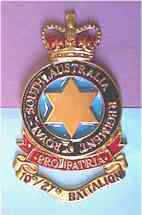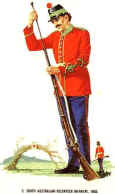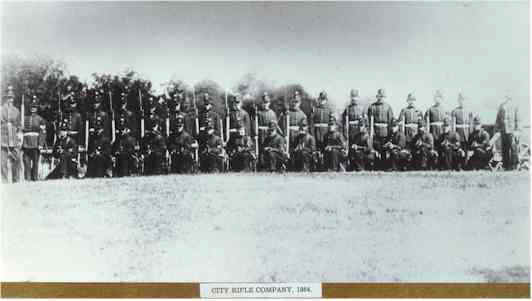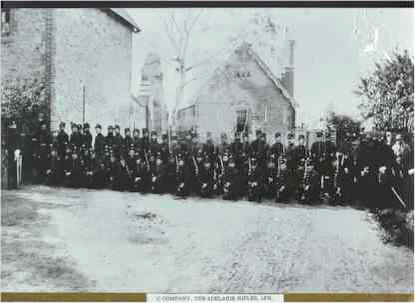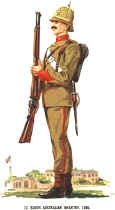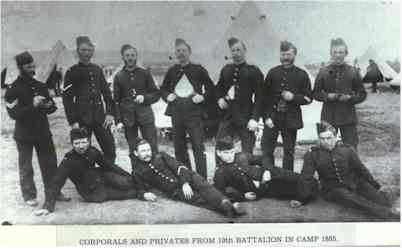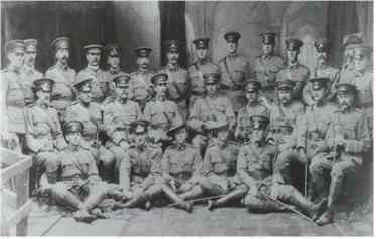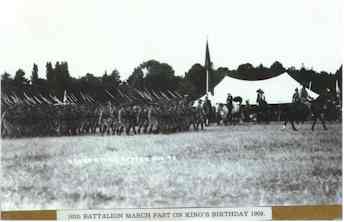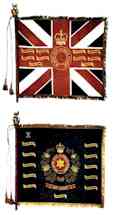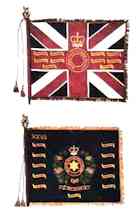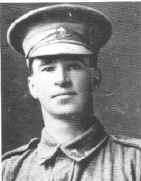 |
|
|
|
| The history of the infantry in South Australia is a very confusing one
due to the pre-Federation system of volunteer forces within each state, and
several Army re-organisations before, and after Federation. The
history of the Regiment represented on these pages is by no means in full detail
and is designed as a brief introduction to the history and traditions of the
Royal South Australia Regiment.
Click here to view our battle honours Click here to view our Victoria Cross Winners LINEAGE
Our Early History 1860-1914
On 16 November, 1867 the Adelaide Regiment of Volunteer Rifles was renamed the "Prince Alfred's Rifle Volunteers. " Unfortunately this regiment was disbanded shortly afterward. The Scottish Company became the "Th" on 18th November the same year. With the outbreak of war in France in 1870, the Governor of South Australia saw fit to address the defence issue of South Australia. Sir James Ferguson submitted a plan to create two 500-600 man Battalions, two batteries and four troops of cavalry. This proposal met with little favour from the politicians except a few who saw it as a solution for the State's unemployment situation. But it was finance that finally curtailed any further expansion of the South Australian Militia Forces.
The Regiment of Adelaide Rifles was as follows:
During the war in South Africa (1899-1901), members from various South Australian Regiments served as volunteers with the Australian contingent. As a result of this, and in recognition of their service, their Regiments were presented with their King's (now Queen's ) Colors. In 1910, Lord Kitchener presented a compulsory military training scheme as a part of the Defence Act of 1910. The resultant Force became known as the Australian Citizen Army, and was raised by compulsory military training for men over the age of 18. The Units were raised progressively, and so by 1912, there were nine Infantry Regiments in South Australia, numbered consecutively from 74 to 82. South Australia itself became the 4th Military District, commanded by Colonel H. LeMesurier. Again Battalions were re-numbered. South Australia Infantry becoming 74th Infantry Regiment covering the south-east of South Australia to the Victorian border. The 74th Infantry was to be commanded by LTCOL Walter Dollman (later distinguished as the CO 27th Battalion AIF during the First World war). It was decided between LTCOL Dollman and COL Lennon Raws (CO 10th Australian Infantry Regiment that the 74th Would take over the King's Colour for South Africa Service. The Battalions remained 10th and 74th Up to the outbreak of War in Europe. 10th was the first to sail from Adelaide, in Nov 1914, and the newly raised 27th Battalion was to follow early in 1915.
Further helpful Information:
It should be noted that the RSAR does not represent four other infantry units in which South Australian soldiers served, but whose HQ's were in other states, principally Western Australia and Tasmania. These units were 12th, 16th, 32nd and 52nd Battalions. The association of the RSAR with units listed above, stems from the Army re-organisation of 1921, where the militia units, whose history was aligned through to the volunteer forces pre-Federation, were aligned with and retitled to the 1st AIF units that had been disbanded in 1919. The alignment was arbitrary, an example of which is the 50th Battalion, which, although a split of the 10th Battalion in WW1, was aligned with the 80th Wakefield Regiment, whose members served in South Africa, hence the rationale for this unit having that Battle Honour. It is important not to confuse the militia battalions in existence during WW2, with their respective namesakes of the 2nd AIF. The 2nd AIF was raised independently of the militia, adopting the unit numbers of the state militia in existence at the time. The 27th Battalion SA Scottish, not to be confused with the 2nd/27th Battalion, served in the South West Pacific, and was the only SA militia battalion to serve overseas. None of the other SA militia battalions saw active service overseas. Militia battalions served as home defence battalions: the 48th Battalion, not to be confused with the 2nd/48th Battalion, served as an anti-aircraft unit on mainland Australia during WW2. When 1st Battalion, RSAR was subsequently split into 10th and 27th Battalions, the individual battalions of the RSAR adopted the lineage of the respective battalion. 10th and 27th Battalions were linked on Sunday, 29th November 1987 to form 10th/27th Battalion the Royal South Australia Regiment, or 10th/27th RSAR. Photographs on this page are used with kind permission of the Royal South Australia Regimental Collection, displayed at the Army Museum Keswick Barracks, South Australia.
|
|
|
|
Our Colors took part in the Centenary of the Army Parade outside the Australian War Memorial, Canberra, 2001 |
|
All Battle Honours emblazoned on the Battalion's Queen's and regimental Colours are a result of our Battalion's participation in the respective battles or campaigns. As a result of the linking of the battalions, we possess two sets of Colours. Both sets of the Battalion's Colours display 21 individual Battle Honours, however the Battalion holds over forty such honours. (Because the Battalion has so many Battle honours in its proud history, permission was sought to display some of these honours on the Queens Colour. For this to be granted is a great honour in itself for the Battalion.) The Battle Honours on the Queen's and Regimental Colours of the Battalions that make up the Royal South Australia Regiment are identical. (ie. 10th Battalion and 27th Battalion make up the RSAR at present.) The only differences between Colours of the battalions are the Battalion's number in Roman numerals, and 43rd Battalion's Queen's Colours being on an Australian flag, rather than the Union flag. 43rd Battalion's Queen's Colours are on an Australian flag because of changes to the Queen's Colour's design approved by HRH, Queen Elizabeth II in 1969.
|
|
|
|
|
Queen's and Regimental Colours of the 10th Battalion, |
Queen's and Regimental Colours of the 27th Battalion, |
|
Royal South Australia Regiment |
|
|
|
|
The Victoria Cross is Australia's highest award for Bravery in battle. Originally they were cast from the metal of Russian Cannons captured during the Crimean War in 1854-6. The Royal South Australia Regiment claims no less than 10 winners of this highly valued medal. A list of winners and a brief synopsis of their citations appears below. |
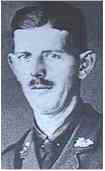 |
Lieutenant Arthur Seaforth Blackburn, 10th Battalion was awarded the Victoria Cross on the 23rd July 1916 at Pozieres, France. Blackburn joined the 10th Battalion on the 19th August 1914. He took part in the landing at Gallipoli on 25th April 1915, and was commissioned as 2nd Lieutenant in August 1915. He went with the Battalion to France, where he took part in an attack on the Somme near Pozieres. He was to join the 9th Battalion with his company to support an advance under heavy gunfire. Blackburn made four successive bombing parties, many of whom were killed. The enemy strongpoint was destroyed and over 350 meters of trench was captured. For this exploit, Lieutenant Blackburn was awarded the Victoria Cross. |
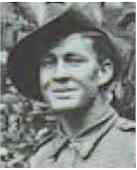 |
Corporal Phillip Davey, 10th Battalion was
awarded the Victoria Cross on 28th June 1918 at Merris, France. Davey
joined the 10th Battalion on 22nd December 1914. He joined the Battalion
with the first reinforcements two weeks before the landing at Gallipoli.
He contracted enteric fever while there and was evacuated home. In June
1916 he re-embarked for France with the 18th Reinforcements, and arrived
at the Battalion on 3rd October of that year. He was promoted Corporal
on the 24th April 1918. On 28th June, while at Merris, his platoon came under heavy fire from almost point-blank range. Many were killed, and Davey single-handedly attacked the enemy machinegun with bombs. Returning for more bombs, he finally took the position, killing eight crew, then turning the gun on the enemy. In doing so he foiled a counter-attack. For his bravery and initiative, Corporal Davey was awarded the Victoria Cross. |
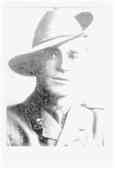 |
Private Reginald Roy Inwood, 10th Battalion,
was awarded the Victoria Cross on the night of the 20-21 September 1917
at Polygon Wood, east of Ypres, Belgium. On 20 October 1914, he embarked
for Egypt, took part in the Landing at Gallipoli, and later served with
the 10th Battalion in France. It was during the Battle of Menin Road
that Pte Inwood won his VC. 11th Battalion captured the first objective, 12th Battalion the second and 9th and 10th Battalions the third. Inwood went out alone to destroy an enemy strongpoint. Instead, he captured nine prisoners, killed several others and allowed the advance to continue to the third objective. The next morning Inwood and a member of 7th Battalion, went out against an enemy machinegun which was causing casualties. They crept up behind the gun, and captured the gun after bombing the crew. The surviving crewman was forced to carry the gun back to Australian lines. |
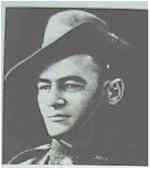 |
Private Joergen Christian Jensen
50th
Battalion, was born in Loegstoer, Denmark and migrated to Australia with
his family in 1909. He was to be awarded the Victoria Cross on 2nd April
1917 at Norieul, France. Claiming to be a labourer, Jensen enlisted in Adelaide on 23rd March 1915, and was posted to 10th Battalion as a reinforcement. He served with 10th Battalion on Gallipoli, and went to France with them. He was wounded in August 1916, and on his return to active service, was posted to 50th Battalion. At 0530, 2 April 1917, the 50th and 51st Battalions attacked an 'Outpost Village' at Norieul. The advance on the right flank was checked by an enemy machine-gun and forty-five men in a strongpoint. The gunner at the post was shot, enabling Jensen to get close enough to bluff the enemy from that position, and another nearby, into believing they were surrounded. He then stood up on the parapet, waving his helmet until the firing and shelling ceased. He then ordered his prisoners to Australian lines. Norieul fell the next day in heavy fighting. |
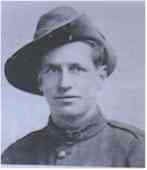 |
Private James Park Woods
48th Battalion, was
awarded his Victoria Cross near Le Verguier, North-west of St Quentin,
on 18th September 1918. Born in Gawler, in 1891, Woods was employed as a
vigneron in Caversham Western Australia at the time of his enlistment on
29th September 1916. Posted as a reinforcement to 48th Battalion,
arriving at their position on 13th September 1917. Woods won his VC during the attack on the Hindenberg Line. His unit succeeded in capturing 480 prisoners along with the first objective. 46th Battalion fought through, and was subsequently held up on the right flank. A Company of 48th Battalion was sent to their aid, and Woods and three Compadres conducted a reconnaissance. Locating a strongly held enemy position, with excellent fields of fire, Woods attacked. At least thirty enemy soldiers fled, leaving behind a four heavy and two light machineguns. They held the position against a strong counterattack, Woods lay on the parapet throwing bombs that were passed up to him. This continued until help arrived and consolidated the position. |
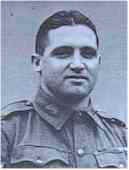 |
Sergeant Thomas Currie Derrick
2nd/48th
Battalion was awarded the Victoria Cross at Sattelberg, New Guinea on 24
November 1943. Derrick enlisted on 5 July 1940 and was allotted to the
2nd/48th Battalion. He was promoted Corporal on 11th July 1941 while
serving in Tobruk, North Africa. He was awarded a DCM on 20th July,
1941, and was promoted Sergeant on the 28th July. He was wounded at El Alamein, and was to rejoin his unit in the Ramu and Markham
Valleys. During the advance, near Sattelberg, about 600m from the summit, Derrick's Company was ordered to outflank a strongly held and well-sighted Japanese position. Each attempt was thwarted by the accuracy of the fire. Derrick went forward ahead of his section, and grenaded a Machinegun nest. He ordered his second section to advance. They were held up by six more enemy posts. Derrick again went forward, throwing grenade after grenade at the enemy posts, causing them to flee leaving behind weapons and grenades. Four more times, Derrick was to advance, throw grenades, and silence enemy positions. By 10.00am that morning, the Australian Flag was hoisted over Sattelberg. |
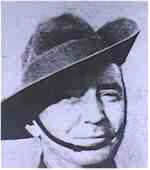 |
Private Percival Eric
Gratwick, 2nd 48th
Battalion, was awarded the Victoria Cross on 25-6 October 1942 during
the Battle of El Alamein. Gratwick's Company was advancing on the left flank and was forced to ground by well-directed enemy fire. The Platoon Commander, Sergeant and many others were killed. The strength of the platoon was reduced to just seven. Gratwick charged the nearest enemy position with bayonet fixed rifle and a grenade. Throwing a grenade into the pit, he jumped in, killing all of the occupants, even an entire mortar crew. He then charged through heavy machine-gun fire toward a second position inflicting still more casualties. He was killed just short of the second position by a burst of machine-gun fire. He was buried in Tel El Eisa cemetery on 27th October 1942, and was later re-interred at the El Alamein. |
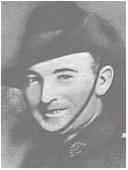 |
Private Arthur Stanley Gurney, 2nd/48th
Battalion, was awarded his Victoria Cross near Tel El Eisa, on 22nd July
1942. Born in Western Australia, Gurney enlisted on 6th December 1940
and embarked from Fremantle for the Middle East on 6th July 1941. He was
posted to the 2nd/48th Battalion on 12 September when the Battalion was
part of the Tobruk Garrison. Gurney won his VC during an attack at Tel El Eisa. His Company was held up by intense machinegun fire from positions 100 meters ahead, all officers either wounded or killed. Gurney, without hesitation, charged the nearest machine-gun, bayoneting three crewmen, and silencing the post. He continued on to the second, bayoneting a further two, taking the third member prisoner. He was the victim of a grenade attack, but raised himself up, and charged a third position. Gurney disappeared from view, and his body was later found in one of the pits. He is buried in the El Alamein Cemetery. |
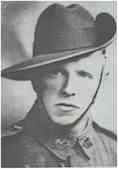 |
Sergeant William Henry Kibby, 2nd/48th
Battalion, was awarded the Victoria Cross during the Battles for El
Alamein, Egypt between 23-31 October, 1942. Kibby was born in Durham, England and settled with his parents in Glenelg, South Australia in 1914. He was employed as a fibrous plaster fixer and interior decorator, and enlisted on 29 June 1940. Kibby was posted to 2nd/48th Battalion on 27th August 1940, and on 14 September was promoted Corporal. He embarked on 17 November, trained in Palestine, and then moved with the Battalion to Derna and then took part in the Tobruk Garrison. After breaking his leg in June 1941, Kibby was hospitalised, only to rejoin the Battalion at Tel El Eisa in October 1942. On 23rd October, Kibby's Platoon Commander was killed, and he shouted for his platoon to attack an enemy machinegun. They did not hear him over the battle noise, so Kibby alone silenced the position, killing three enemy and capturing twelve others. On the 26 October, Kibby moved from section to section directing fire, and himself several times went out to mend communication lines to enable mortar support. On the night 30-1 October, Kibby again distinguished himself. He went out alone to silence the last remaining machinegun hampering the advance of the Battalion, and destroyed the gun, but not before he himself succumbed to a burst of enemy machinegun fire. |
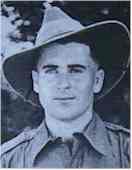 |
Private Leslie Thomas Starcevich, 2nd/43rd Battalion, was awarded his Victoria Cross Near Beaufort, British North Borneo (now Malaysia) on 28th June 1945. Starcevich (Starcey to his mates) was born in Subiaco, Western Australia on 5 November 1918. He enlisted on 9th April 1941, embarked at Fremantle on 9th September, and arrived at 2nd/43rd Battalion on 30 December in Palestine. After he was wounded at Tel El Eisa on 17 July, 1942, he returned in time to see the Battle of El Alamein begin on 23rd October. The 2nd/43rd returned to Australia in February 1943 and left for New Guinea in September the same year. Starcey took part in the battles of Lae and Finschafen, and went with the Battalion to Beaufort in June 1945. Starcevich was a Bren gunner, and his unit was held up under heavy fire from two enemy machineguns. He assaulted each position in turn, killing five enemy, and forcing the rest to withdraw. The advance continued until fire from another machinegun again held them up. Starcevich, without regard for his own personal safety, rushed forward capturing the gun and killing seven enemy. By the 29 June the fighting was just about all over. Starcevich was actually awarded his medal on the 28 August 1947 by the Governor of Western Australia, Sir James Mitchell. |
|
|
T/Corporal Lawrence Weathers, 43rd Battalion received his Victoria Cross for his efforts north of the French village of Peronne on 2nd September, 1918. During an attack, his party was held up by a strongly held trench. Weathers went forward alone with a supply of bombs. He returned once, and with three comrades bombed the enemy while under heavy fire. weathers eventually gained the enemy parapet, and together with his comrades, succeeded in capturing the trench, 180 enemy soldiers and three machine-guns. Due to this single action of bravery, the final objective was secured with a vastly decreased loss of life had the trench remained in enemy hands. |

